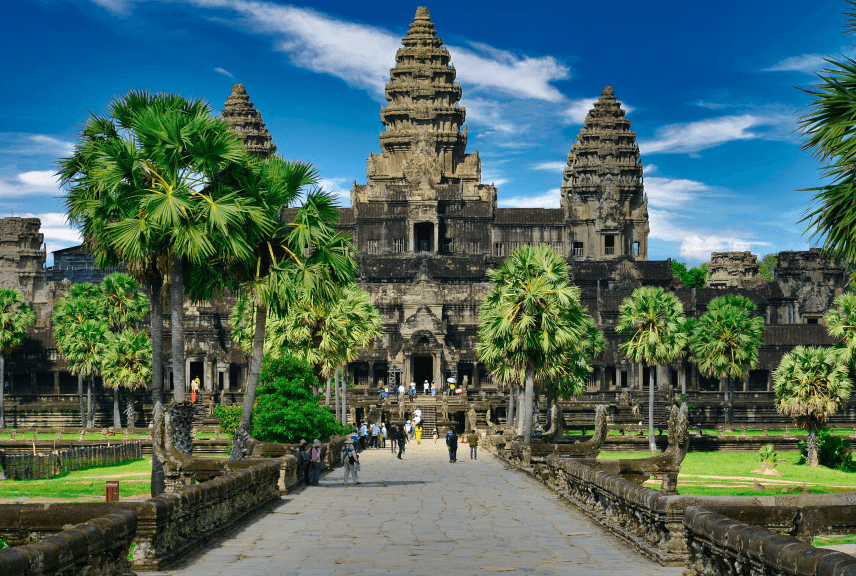Lao Nature: is not totally discovered
When making a tour schedule to Laos, please do not only think about different costumes made by cotton and silk, but consideration for the places where green forests, jungles, mountains, wild animals and fresh air are available to admire as well. Tourism in Laos is based n traditional culture and nature. Laos is one of the oldest nations in the world and has developed its own civilization and culture since early times.
Lao has 47 minorities of different cultures.
Lao has no coast like Vietnam or Thailand, but the Mekong river and its tributaries can be used for hydropower, mountains, jungles, valleys, caves, fresh air, wind, sunlight and wild animals are available for all visitors. To date more than 20 forest areas of more than three hundred thousand hectares have been preserved.
So to have nature tours in Laos, we have many types of touring such as ; boating, visit the caves and listening to the birds singing. Tours could be prepared to see the boats rowing along the Mekong and its tributaries, wild animals in Nakai, Nam Nga in Bokeao, walking in the forests and seeing the view of Phoukhaokhouay mount in Vientiane province. Waterfalls are located in various provinces such as Tad Kouang xi, in Luangphrabang Tad-leuk in Bolikhamsay province, Tad-ham in Sayabouly and Tad-lo in salavan.
Spring waters are available in Muongkham district, Xieng-khouang province, khamkeut in Bolikhamxai province and Phouphamane mount along the road No.8A in Bolikhamxai. Caves include Thamchang cave in Vangvieng, caves in Khammouane ans historical caves in Viengxai and Houaphan provinces.
For boats rowing to see views of Mekong river, even though the Mekong is not straight for 4,500 km. pass through many countries but the Mekong in Laos is the longest one than in other Mekong river countries. The best section is between Bokea and Luangphrabang. Natural sites in Laos include rivers, cascades and mountains, in the south, there are many islands; one of the famous water visiting site is called “Mahanathi-Siphandone” and very high waterfall called “Khonephapheng” where dolphins can be preserved.
NONG FA (LAKE)
Nong Kai Ok (Cock lake) or less known by other name as “Nong Fa” is located at a 3-days walk from Sanxai district in the Southern Attapeu province. Situated amid serene natural beauty and fenced by peaks of mountains, this virgin lake has all year round sky blue water. The size of the lake has not yet been measured, there is a wellinformed source saying that a shot of AK 47 rifle from one edge of the lake never reaches the other. Available information on the lake has so far collected from mystery and strange stories built around it. The inhabitants of Attapeu believes that the lake is the place of divinity and sacredness but many believe that the lake was created by a volcanic eruption thousands upon thousands years ago.
NAM OU (RIVER)
Nam Ou river, a history reflecting nationalism in Laos. Historically what is presently know as LuangPrabang, originates from a group of minorities who immigrated from Nan China along the Nam Ou river.
Where does Nam Ou river originate from? Chansamal Khouakham, an officer from the department of information and Culture in Moung Gnot Ou district, who was present when marking the boundary line between Laos-China, started that Nam Ou river begins from the hill foot of Phou Khoud mountain (close to the 5th boder sign on the slope of the mountain) with a height of 1245 meters which forms a natural boundary line between Laos and China. With a radius of about 25 meters the ponds creating the source of Nam Ou river is ina flat area surrounded by white sand and gravel. Dense grass along with huge soft wood such as; Ton Thong and Ton Toum Tam grow tall where the water is shallow to the ankle. From this point Nam Ou river curves downward 10 km reaching 7th boder sign at Lan Tui, the boundary line between Laos-China. At this point with a width of 2-3 meters wide, Nam Ou current becomes powerful and swiftly runs through the rain forest of Phou Fa mountain strongly to the mouth of Nam Ou river. Nam Ou river, wit a toal length of 488 km is the longest tributary of the Mekong river. Besides the Nam Ou river, Phou Khoud mountain creates 3 additional rivers in Laos; Nam Xang, Nam Ou Noy and Nam Khang river. In China, Phou Khoud mountain is the source of another river.
Lan Tui or Ban Xieng Siew village was the furthest that a vehicle colud go. In order to get to the source of Nam Ou river, it would take 3 hours walk through the forest of Phou Doi, reaching Ban Pa Thay home of the ethnic Cela tribe and an additional 2 hours walk from here on. It can be observed that only Lao people weave the basket of sticky rice.The basket is to Lao in the world.
Sticky rice is the main food for Lao.The ware that they used to contain their rice after steaming is called Tipkao, Elpkao or Kongkao. Lao man have to be skillful in farming, make bamboo strips, fishing net and other works, while the women should be skillful in cotton spinning, textile weaving, silkworm raising, cooking and poultry-raising. Bamboo strips are made from the bamboo trees, namely : Maibong, Mailai, Maisand, Maihai and Maithae.
The strips made by the above bamboo or wood are very durable, easy to weave.Other types of wood are broken easily and not durable. after the bamboo is selected,it is warmed a few minutes on the fire and then chopped into very thin strips. After thet dry them under the sun.If we need to colour them, we should dye them, fry under the sun, then weave the basket as designed.
For weaving, first, we should design a pattern, then weave according to the structure and pattern.The amount of the strips prepares are related to the size of the basket of rice. The short one can be used for the small one and the long one used for the big one.The edge of the strip should leave in the inner part in order to hide the joint. It requires a high skill level to avoid seeing the joint in the basket. If the strips are not soft enough, we have to water them a little.If the strips are too dry, it will be broken easily.
PHOU FA (MOUNTAIN)
The scenery from the peak of a mountain is breath taking and difficult to find, however the peak of phou Fa mountain allows for imponderable views of the Phongsali District with great ease.
Phou Fa mountain stands 1626 meters above sea level, (the highest mountain in Phongsall is Phou Doi Chi mountain with the height of 1842m) from far away it takes on the shape of a lion having a delicious feast happily in Phongsali. These is an old local history which says, about 6-7 generations ago, a man named SansiOnsa led over a thousand families of innigrants from Tibet, Myanmar and ChiengMai, Golden Triangle to settle in Vieng Phou Kha (Luang Namtha Province) and later upward to Nham Ou river reaching Bhak Long on the banks of Bhak Long river. Here, they found a densely mountainous forest in the regions of Phongsaly, a place where they would settle and establish a new home.
Forest greenery enfolds Phou Fa mountain providing many types of flowers to blossom at will in the cool temperatures, such as; Dok Thong, Dok Gnui, Dok Khai, Dok Bhik, Dok Ban and so on. Wild animals such as; wild fiwls, Sambar deers, Barking deers, javans tigers, bears and different types of birds also depend on the forest. Furthermore Phou Fa mountain has a very odd pine trees. When it rains, the while reindeer calls for the sun, and when there is only sun the white reindeer calls for the rain. As for the odd pine trees which is difficult to find elsewhere, buds red needles when there is fury among the rural villages in the year to come. The two huge trees grow close to the path leading to the peak of the mountain.
The peak of Phou Fa mountain has an area of about 300 square meters, which during the war soldiers used as a place of importance in warfare. In 1999 local villagers constructed a path with 431 stairs leasing the way to the peak of the mountain making it become a symbol and a definite tourist attraction.







